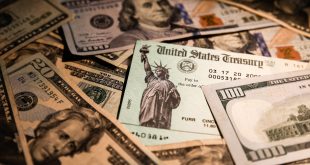US economic data has been mostly stable, with the Consumer Price Index on September 13 being crucial ahead of the FOMC meeting on September 19-20. Key reports in the US next week include Factory Orders and revised Q2 Unit Labor Costs.
The Australian Dollar was the best performer among majors during the week, recording weekly gains after six consecutive weeks of decline. The Reserve Bank of Australia will announce its monetary policy decision on Tuesday, with no change expected. The Q2 GDP report is expected to show a 0.3% expansion, surpassing the 0.2% recorded in the first quarter.
Economic Data
The August Nonfarm Payrolls data showed a mix of jobs adding 187000, beating the 177,000 estimate. However, the rise in the unemployment rate to 3.8% YoY did not boost the US Dollar. Investors speculate that the Federal Reserve might delay tightening monetary conditions in September, leading to reduced bets on rate hikes by November.
The GBP/USD soared towards its daily high, but a report on business activity that came in above expectations set off a turnaround, leading to the Pound giving up those gains. The ISM Manufacturing PMI increased from 46.4 to 47.6, reflecting a more upbeat outlook on US economic activity. The US Dollar Index jumped on Friday, surpassing 104.20 and heading towards the highest daily close since April.
However, the 104.50 area remains a significant resistance level. The DXY need to consolidate above that area to open the doors to more gains, while below, it would be vulnerable to sharp corrections.
Key Developments
The latest data shows inflation slowing down in the Eurozone, although not as rapidly as anticipated, and the activity outlook is worsening. This has subjected the next European Central Bank meeting to a precarious position.
The prospect of a less hawkish ECB weighed on the Euro, causing it to pull back sharply after reaching weekly highs against the US Dollar, Pound, and Yen. Eurostat will report the Producer Price Index and compensation per employee during the second quarter.
EUR/USD posted its seventh consecutive weekly decline after erasing gains on Friday. The bias remains to the downside, while EUR/GBP continues to move sideways within a wide range between 0.8500 and 0.8700. The pair closed the week around 1.2600. Failure to rise above that level could trigger a sharp correction, while a break above it would set the stage for further gains for the USD/CHF pair. Switzerland will report its Q2 GDP on Monday.
USD/CAD finished the week hovering around 1.3600, after surging on Friday following weaker-than-expected Canadian GDP data. The Bank of Canada is widely expected to keep interest rates unchanged on Wednesday.
Next Week’s Events
On Monday, September 4, the U.S. stock market will be closed in observance of Labour Day, as will the roughly $25 trillion Treasury market, providing employees an extra day off for the long weekend. So, Monday is a holiday in the United States and Canada, with the Reserve Bank of Australia and the Bank of Canada announcing their monetary policy decisions later in the week. Trade data from China, Australian GDP, and Canadian jobs data are among the most important reports to watch for.
Also Read:
Gold’s chance to rebound diminished on stronger US dollar
EUR/USD reverses course after US PMIs data
USD/JPY mildly recovers post NFP data on rising Treasury yields
Fed Officials Care Most To How Restrictive Policy Needs To Be, For How Long
 Noor Trends News, Technical Analysis, Educational Tools and Recommendations
Noor Trends News, Technical Analysis, Educational Tools and Recommendations





